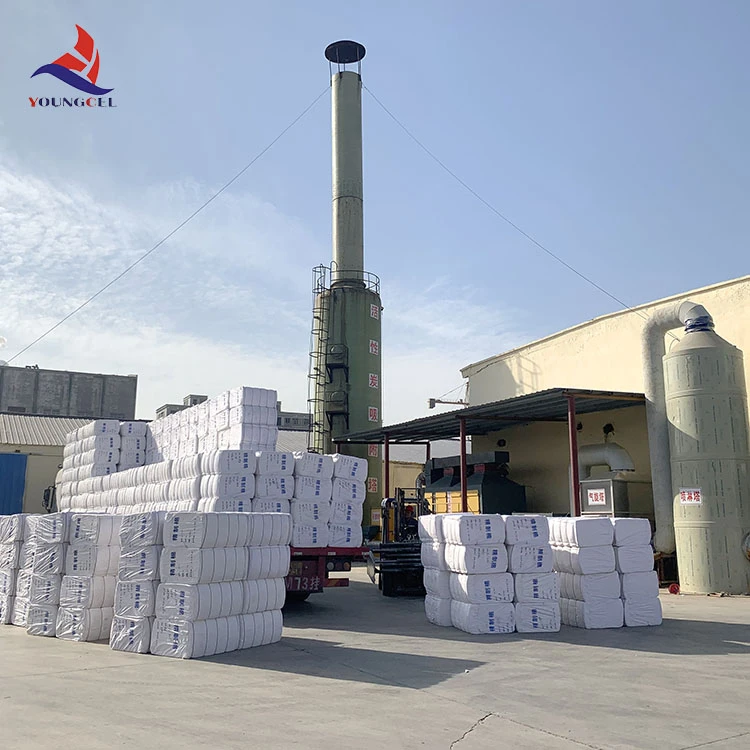Understanding Redispersible Powder (RDP) A Key Component in Construction and Manufacturing
Redispersible powder (RDP) is a critical material widely used in construction, coatings, and various industrial applications. It is a type of dry polymer that can be dispersed in water to form a homogenous aqueous solution. RDP is typically derived from polymer emulsions, which are dried into a powder form and then used in combination with other materials to enhance their performance. This article will explore the characteristics, benefits, applications, and future perspectives of RDP in different sectors.
Characteristics of Redispersible Powder
RDPs are known for their unique properties, which include excellent adhesion, flexibility, and resistance to water and weather. Depending on the specific formulation, RDPs can provide varying degrees of elasticity, tensile strength, and thermal stability. Because RDPs are imported into water-based systems, they improve the overall performance of mortars, plasters, and coatings by enhancing their workability and durability.
One of the most significant advantages of RDP is its ability to rehydrate once mixed with water, forming a stable emulsion. This feature allows RDPs to integrate seamlessly into various formulations, contributing to properties like improved bond strength and reduced crack formation in construction materials.
Benefits of Using RDP
Employing redispersible powders in construction and manufacturing offers several benefits. Firstly, RDPs enhance the mechanical properties of materials, increasing their strength and durability. This translates into longer-lasting products and reduced maintenance costs.
Secondly, RDPs improve the versatility of formulations. They can be used in a wide range of applications, from tile adhesives and exterior insulation systems to plasters and paints. The ability to customize RDP formulations for specific applications means that manufacturers can tailor their products to meet the diverse needs of the industry.
Thirdly, RDPs contribute to better workability. They allow for longer open time, which is crucial for projects that require precise application and adjustments. RDPs also help in reducing the moisture sensitivity of dry mixes, making them more forgiving in various environmental conditions.
Applications of Redispersible Powder
RDPs find applications in numerous sectors, most notably in the construction industry. They are commonly used in
redispersible powder rdp

1. Tile Adhesives RDPs provide excellent adhesion, allowing tiles to adhere better to various substrates while reducing the risk of cracking.
2. Plaster and Mortar The use of RDPs in plaster formulations improves flexibility and reduces shrinkage cracks, making these materials suitable for both interior and exterior applications.
3. Coatings In paints and coatings, RDPs enhance water resistance and improve the overall durability of the products.
4. Self-Leveling Compounds RDPs are used in self-leveling compounds to ensure a smooth finish while allowing for easier application.
5. Insulation Systems RDPs help enhance the performance of exterior insulation and finish systems (EIFS), contributing to energy efficiency.
Future Perspectives
As the demand for high-performance and sustainable building materials continues to rise, the market for redispersible powders is expected to grow. Innovations in RDP formulations will likely focus on improving environmental sustainability and reducing VOC emissions, aligning with global trends towards eco-friendly construction practices.
Additionally, advancements in RDP technology may open new markets and applications, allowing industries to create more efficient and durable products. Continuous research and development will undoubtedly lead to better understanding and improved performance characteristics of RDPs.
Conclusion
In summary, redispersible powders are versatile and essential components in construction and manufacturing. Their ability to enhance the performance of materials makes them invaluable across various applications. As the industry continues to evolve, RDPs will play a crucial role in shaping the future of building materials and sustainable practices. Understanding and leveraging the benefits of RDPs will be key for stakeholders in the construction and coatings sectors.
-
Rdp Powder: Key Considerations for Wholesalers in the Building Materials IndustryNewsJul.08,2025
-
Key Considerations for Wholesalers: Navigating the World of Hpmc - Based ProductsNewsJul.08,2025
-
Hpmc Detergent: Key Considerations for WholesalersNewsJul.08,2025
-
Key Considerations for Wholesalers: China Hpmc For Tile Adhesive, Coating Additives, Concrete Additives, and MoreNewsJul.08,2025
-
Crucial Considerations for Wholesalers: Navigating the World of Construction MaterialsNewsJul.08,2025
-
Key Considerations for Wholesalers Sourcing Additive For Cement, Additive For Concrete, Additive For Putty from Additive Manufacturer Shijiazhuang Gaocheng District Yongfeng Cellulose Co., Ltd.NewsJul.08,2025




